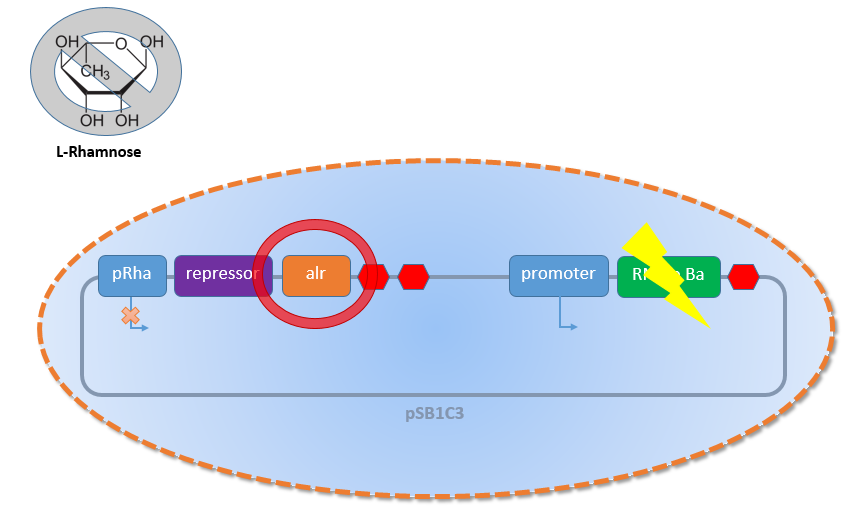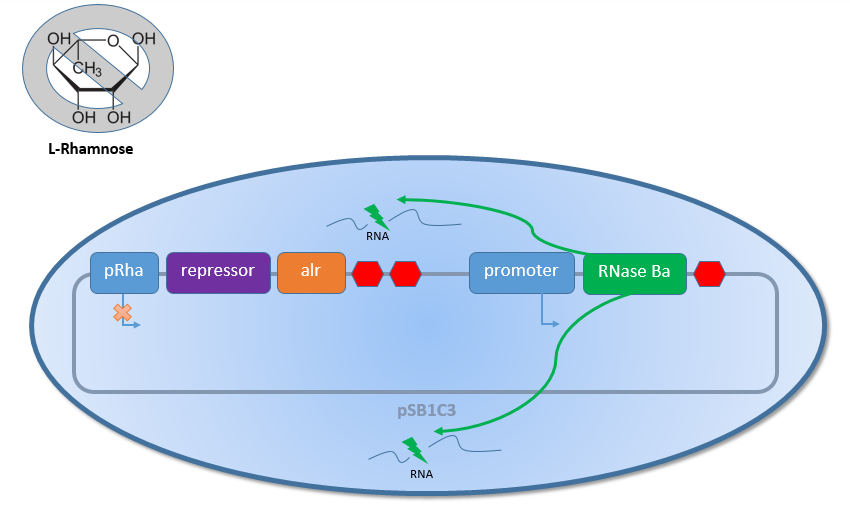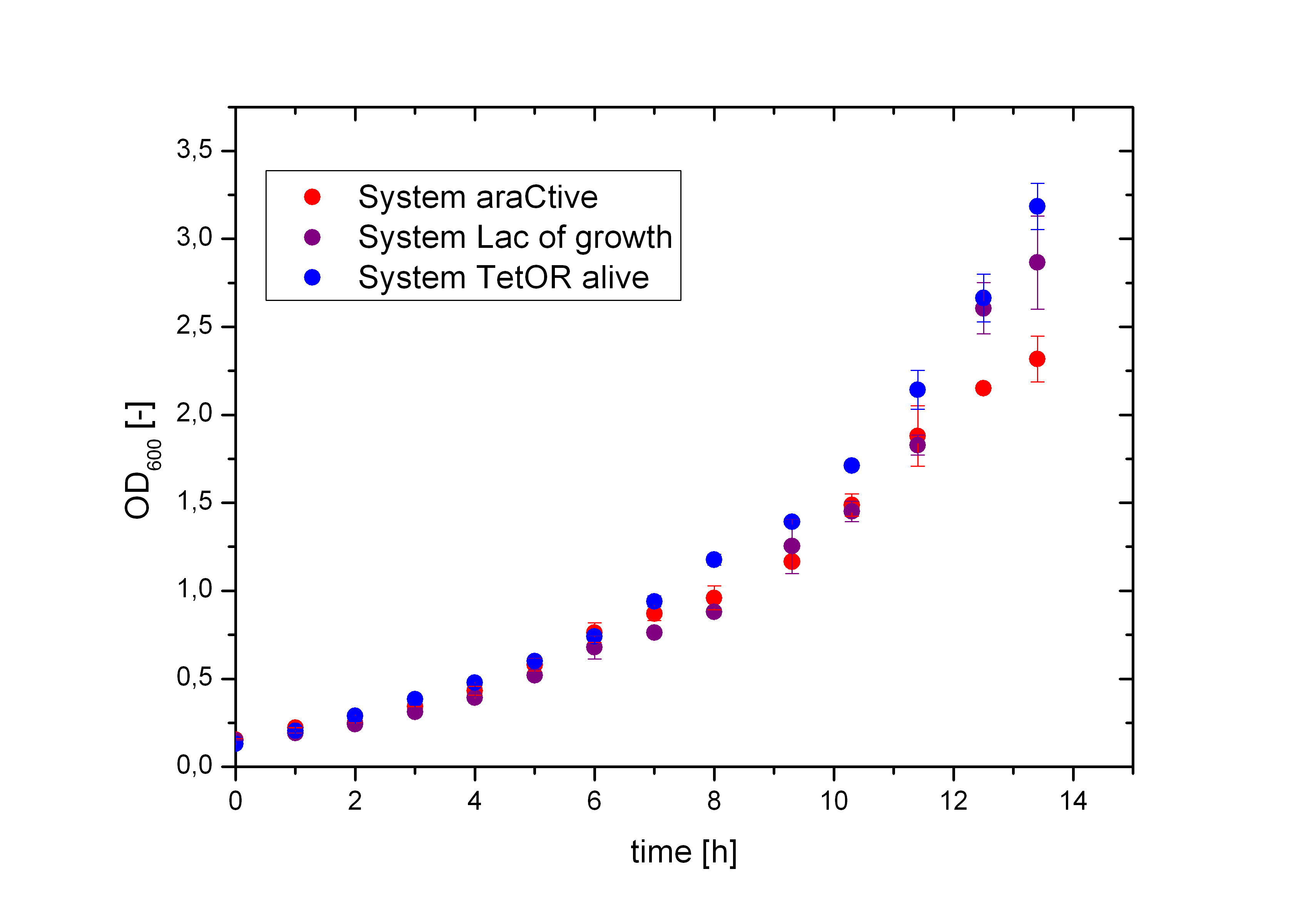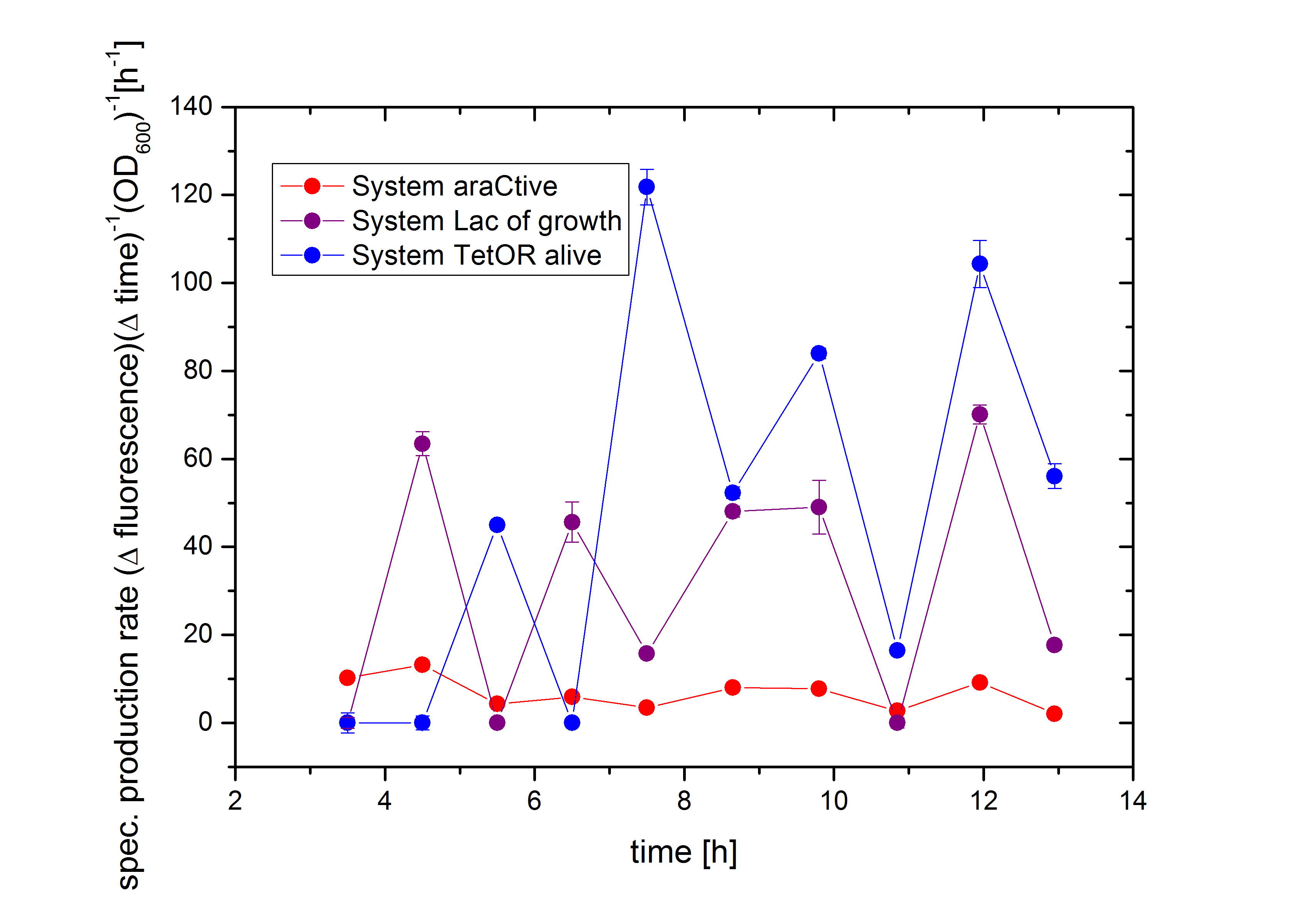Team:Bielefeld-Germany/Biosafety/Biosafety System
From 2013.igem.org
| Line 80: | Line 80: | ||
==Theory== | ==Theory== | ||
| - | + | Biosafety is an important aspect of Synthetic Biology, because it deals with the interaction of the environment and mankind. Several studies deal with the interaction of genetically modified bacteria and natural wild types. Mostly with the result that genetically modified bacteria does not influence the environment, but there is always a risk remaining. Because the genetically modified bacteria are adapted to the excellent conditions of the laboratory, the natural bacteria will outlast this modified strains in nature. So the genetically modified bacteria will not survive because of these evolutionary disadvantage. But there is no guarantee that there is really no interaction and that their release does not effect the equilibrium of the environment. To avoid these problems we also thought of a cell free fuel cell based on enzymes, but this is even more complex and would not be as efficient because of the limited activity of the enzymes. So the questions was, how will an approach as our microbial fuel cell, with genetic modified bacteria for a higher production of energy find application outside the laboratory, without effecting the nature?<br> | |
| + | |||
| + | |||
<br> | <br> | ||
Another example for a second way the repressor acts is a direct interaction between the repressor and the operator. The repressor and the operator build a complex which the RNA polymerase can’t overcome. So the repressor blocks the RNA polymerase. | Another example for a second way the repressor acts is a direct interaction between the repressor and the operator. The repressor and the operator build a complex which the RNA polymerase can’t overcome. So the repressor blocks the RNA polymerase. | ||
Revision as of 02:27, 5 October 2013
Biosafety System
Overview
Biosafety is an essential aspect when taking part in iGEM especially when you work with living organisms which could possibly get out of your application by damage or incorrect handling. In order to counter this problem there exist useful systems to prevent the bacteria from escaping or killing the bacteria when they are outside of the application. To complement this archive we constructed not only one system but also three systems which differ in leakiness and strength. For this approach we combined two common Biosafety-ideas, an auxotrophy and a toxic gene product, in one device. So the constructed Biosafety-System takes the best of this two approaches and is characterized by a double kill-swtich system. This double kill-switch mechanism provides additional a higher plasmid stability and a higher resistance towards undesirable mutations. In one sentence: Our Biosafety-System is safe!
Theory
Biosafety is an important aspect of Synthetic Biology, because it deals with the interaction of the environment and mankind. Several studies deal with the interaction of genetically modified bacteria and natural wild types. Mostly with the result that genetically modified bacteria does not influence the environment, but there is always a risk remaining. Because the genetically modified bacteria are adapted to the excellent conditions of the laboratory, the natural bacteria will outlast this modified strains in nature. So the genetically modified bacteria will not survive because of these evolutionary disadvantage. But there is no guarantee that there is really no interaction and that their release does not effect the equilibrium of the environment. To avoid these problems we also thought of a cell free fuel cell based on enzymes, but this is even more complex and would not be as efficient because of the limited activity of the enzymes. So the questions was, how will an approach as our microbial fuel cell, with genetic modified bacteria for a higher production of energy find application outside the laboratory, without effecting the nature?
Another example for a second way the repressor acts is a direct interaction between the repressor and the operator. The repressor and the operator build a complex which the RNA polymerase can’t overcome. So the repressor blocks the RNA polymerase.
Results
References
- Autoren (Jahr) Titel [Link|Paper Ausgabe: Seiten].
 "
"









